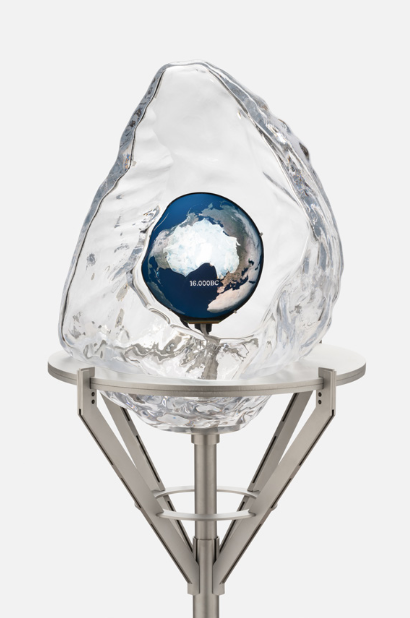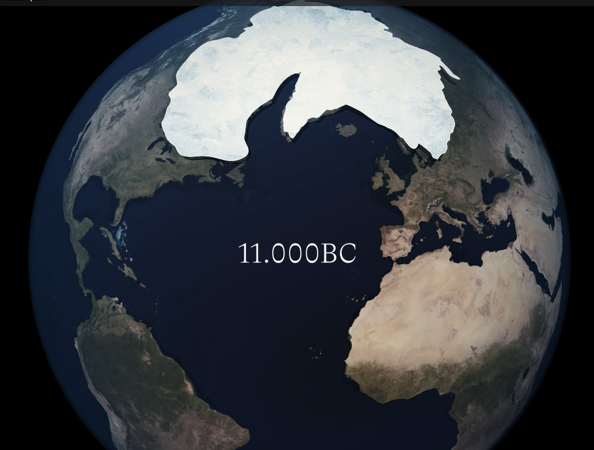GREENLAND'S ICE SHEET

- A country of ice
- The last glacial period
You solve the tasks by using
- Text
- Audio
- Drawing tools
- Pictures
This part is based on pp. 26-33 – there you will find information about the subject.
Learn more about the ice sheet and climate changes here.
This is a model of the ice sheet on Greenland; it covers 80% of the country.
The ice sheet began as several ice caps that eventually merged to a single big one.

The ice caps were created and grew by snowfall after snowfall coming to rest on top of another and gradually the snow was compressed to ice.
What do the arrows on the model show? See page
On page 15 is a map of Sermeq Kujalleq. What does it show?
How can you obtain information about climate changes by studying the ice sheet and glaciers?
The model shows the extension of ice in the northern hemisphere during the latest glacial period, the Weichselian glaciation.
In glacial periods the ice caps spread over large parts of the globe.

Today it is just 80% of Greenland and the North Pole that are covered by ice.

What information can be obtained from the ice cores?
Besides the Weichselian and the Eemian, what other glacial and interglacial periods have there been and when?
What areas were covered by a thick layer of ice during the Weichselian glaciation?
This is a model of the ice sheet on Greenland; it covers 80% of the country.
The ice sheet began as several ice caps that eventually merged to a single big one.

The ice caps were created and grew by snowfall after snowfall coming to rest on top of another and gradually the snow was compressed to ice.
What do the arrows on the model show? See page
On page 15 is a map of Sermeq Kujalleq. What does it show?
How can you obtain information about climate changes by studying the ice sheet and glaciers?
The model shows the extension of ice in the northern hemisphere during the latest glacial period, the Weichselian glaciation.
In glacial periods the ice caps spread over large parts of the globe.

Today it is just 80% of Greenland and the North Pole that are covered by ice.

What information can be obtained from the ice cores?
Besides the Weichselian and the Eemian, what other glacial and interglacial periods have there been and when?
What areas were covered by a thick layer of ice during the Weichselian glaciation?



